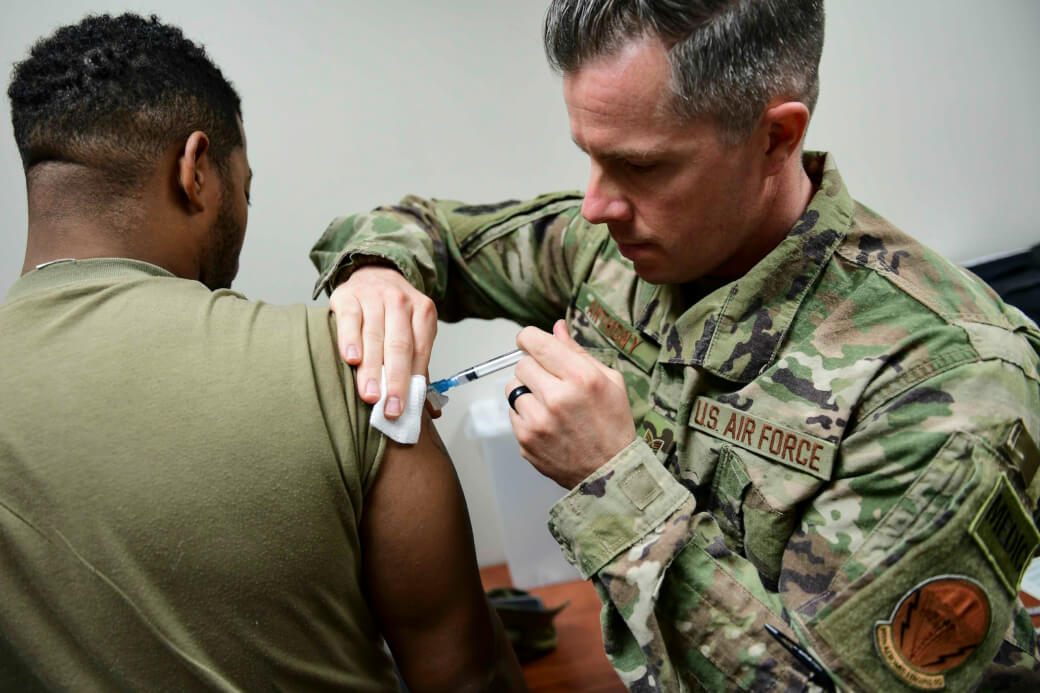The U.S. Department of Defense (DoD) has a keen interest in developments in the field of synthetic biology.
Defense Applications & Opportunities
The DoD started focusing on synthetic biology in 2013. Since then, its capabilities have grown substantially. The following represents the foundational plans DoD developed in 2013 when the field was just emerging, as described by The Office of Technical Intelligence (OTI) of the U.S. Department of Defense Research & Engineering.
Here’s what they were seeing:
Specialty Materials: Synthetic biology research is already demonstrating breakthroughs from novel chemical production to nano-material assembly. Due to DoD’s unique missions, there are many special needs for advanced materials, and this area has low regulatory hurdles; however, it is receiving a relatively small amount of funding. The exception is an ongoing Defense Advanced Research Projects Agency (DARPA) program, which is focused on building synthetic biology infrastructure and using novel materials as a benchmark, the results of which can support future efforts. Thus, the specialty materials area is an attractive investment target for DoD. To leverage academic and private sector investment in this field, DoD plans to build future materials R&D funding opportunities with dedicated sections for biologically-produced materials.
Sensing: Natural and synthetic biological systems can already sense a wide variety of phenomena of interest, from specific chemicals to light and ionizing radiation. With DoD’s unique sensing needs and a paucity of private-sector funding, this is an area which will benefit from DoD funding and which appears to be a major opportunity in the medium-to-long term. Policy and regulatory hurdles for releasing highly-engineered organisms will be substantial, so policy development must accompany R&D. Similarly to specialty materials, DoD services should build future competitions for sensing R&D with dedicated opportunities for novel approaches using synthetic organisms, and a challenge prize would further engage the field.
Biological & Chemical Defense: Synthetic biology may enable potential adversaries to develop chemical and biological threat agents with new characteristics. DoD has a responsibility to stay abreast of this field to enable protection for its military personnel, but because biological and chemical weapons defense is focused on threat mitigation instead of enhancing overall DoD capabilities, it is important to keep its size relative to its importance and not allow this aspect to overshadow the major opportunities provided by the field. By developing the capability to respond to any new pathogen, R&D resources benefit DoD and the nation by improving emerging infectious disease preparedness while also enhancing defenses against novel threats.
In 2013, the DoD’s Office of Technical Intelligence funded Quid, Inc., a San Francisco-based data-analytics firm, to carry out a study of the private company landscape in synthetic biology to gain a better understanding of the direction of the commercial field. The thinking was that private companies tend to be at an earlier stage of development, trends in their formation, foci, and ability to attract investment are all signals which may provide insights into future trends in the commercial world. The data supporting the study covers the period from the first quarter 2009 until the third quarter 2013 and is most representative of activity in the U.S. and Europe because of disparities in the use of venture capital and reporting of investment events in other parts of the world.
The first finding is that there is substantial activity in the synthetic biology area, both in terms of number of companies and investment. This analysis identified 162 private synthetic biology companies operating from 2009-2013 which drew $5.4 billion in investment from 281 distinct investors, including many of the best-known venture capital firms (Khosla Ventures; Draper, Fisher, Jurvetson; Kleiner Perkins; TPG) and corporations (Chevron, Unilever, Novartis).
The DoD cited Intrexon, a synthetic biology company that designs and produces organisms for agricultural, medical, and industrial applications, conducted an initial public offering (IPO) in 2013 that valued the company at more than $2 billion. Here’s what happened to Intrexon.
Conclusion
Here’s what the study suggested:
The synthetic biology field is not, in and of itself, new, but the degree to which the synthetic biology community seeks to engineer biology and the promise of the field are important. Because of the existing and promising future capabilities of engineered organisms, this assessment finds that the synthetic biology space presents a major opportunity for DoD. Targeted basic and applied R&D investment in specialty materials and sensing is likely to generate substantial short- and long-term value, especially in combination with programs to build human capital in DoD. Finally, while DoD should not ignore the biological and chemical weapons implications of synthetic biology, it should not allow these to dominate the conversation. R&D directed at this potential threat should be limited and targeted towards areas likely to generate spillover benefits for DoD’s and the world’s fight against emerging and established infectious diseases. The synthetic biology field appears likely to ‘take off’ in the next decade, and DoD should leverage this momentum towards its needs instead of being left by the wayside
Source: U.S. Department of Defense, Research & Engineering. Technical Assessment: Synthetic Biology
Photo By: Air Force photo by Joshua J. Seybert

